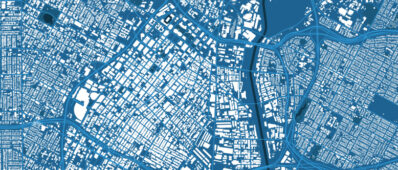Project Summary
We aim to address two societal problems and two interrelated technology challenges facing metropolitan planning organizations (MPOs). The first societal problem relates to the private-sector’s deployment of mobility services (e.g. ridesourcing, ridesharing, bikesharing) and connected automated vehicles (CAVs). Under the right conditions – determining these conditions is a subproblem we will address – mobility service providers (MSPs) and CAVs can provide significant value to communities in terms of sustainability, livability, accessibility, mobility (SLAM) and safety [1]. Unfortunately, the financial outlook of MSPs is quite worrisome with both Uber and Lyft losing billions of dollars annually despite (or maybe because of) steady increases in ridership [2]. Their rapid growth has significantly altered transport systems and life in urban areas, contributing to increases in traffic congestion [3], [4]. Moreover, the deployment of CAVs is significantly behind the timeline suggested by manufacturers just a few years ago, delaying the potential community SLAM benefits of this technology
The second societal problem relates to the public-sector’s role in the deployment pathways of CAVs and MSP service options. The concern is that the public-sector will not be proactive in terms of CAV-related infrastructure investments and MSP- and CAV-related transport policies. If the public-sector only reactively responds to the requests of private-sector MSPs and CAV developers or other non-community entities, this may lead to negative societal outcomes (increased congestion, decreased accessibility for the mobility disadvantaged, increased emissions) and the missed opportunity for positive SLAM outcomes in the short and long-term.
To proactively craft policies and make infrastructure upgrades to address these societal problems, MPOs need to be able to (1) assess the impacts of infrastructure investments and transport policies on the transport system, and (2) determine the best CAV-related infrastructure upgrades to improve community SLAM outcomes. Unfortunately, MPOs in the United States currently lack both sets of these capabilities.
The first technological challenge facing MPOs is that their regional transport modeling tools were not built to capture the behavior of MSPs (e.g. Uber and Lyft) nor CAVs, meaning they cannot assess the effects of transport policies and infrastructure investments on MSPs and CAVs. Hence, we plan to develop models for MPOs that explicitly capture MSPs and CAVs within the transport system and are sensitive to transport policies and infrastructure investments. Our models will capture the behavioral responses of travelers and MSPs and network performance impacts of policies and infrastructure investments.
The second technological challenge facing MPOs is that even within their existing modeling suite, they can only analyze the impacts of infrastructure investments; they do not have models and algorithms to optimize infrastructure investments; they can only test different pre-defined infrastructure investments and transport policies. We plan to develop a bi-level network optimization model and solution algorithms to optimize CAV related infrastructure upgrades. The objective function will include community SLAM metrics. The problem formulation will also include budgetary constraints and network equilibrium constraints wherein the latter constraints capture the responses of MSPs and individual travelers to infrastructure upgrades.







